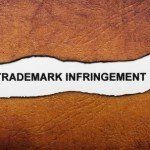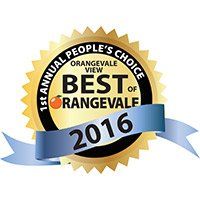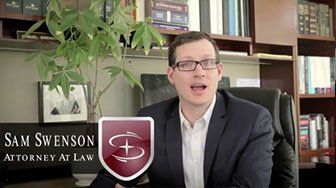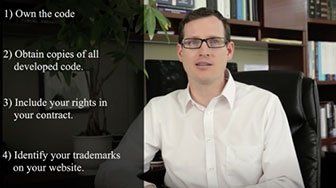Client Login
×PRACTICE AREAS
RATINGS
CONNECT WITH US
VIDEOS
Understanding Trademark Infringement – It is not so easy
 To determine whether or not a trademark has been infringed
, the court looks to see if there is “confusing similarity” between the marks. In other words, would the average consumer believe both products and services came from the same source? The trademarks do not have to be identical – it is sufficient if there is a “likelihood of confusion.” If the two marks are so similar that there is confusion as to their source, trademark infringement has occurred.
To determine whether or not a trademark has been infringed
, the court looks to see if there is “confusing similarity” between the marks. In other words, would the average consumer believe both products and services came from the same source? The trademarks do not have to be identical – it is sufficient if there is a “likelihood of confusion.” If the two marks are so similar that there is confusion as to their source, trademark infringement has occurred.
In applying the likelihood of confusion test, the courts consider factors such as:
- The similarity of the marks
- If the two businesses are related or close in proximity
- How strong the senior user’s mark is
- The marketing channels used to promote the marks
- The degree of care used by consumers in choosing the goods or services
- Whether there is any proof of actual confusion between the marks
- How likely it is for the product lines to be expanded
The above factors are merely examples of what a court will consider. There are other factors that may also impact the court’s decision. Additionally, the court may not give each factor the same amount of weight because each trademark infringement case is decided according to its unique facts.
The party that allegedly infringed on the trademark may have several defenses available. The equitable doctrines of laches, estoppel and unclean hands may be applicable. Additionally, the alleged infringer may also argue the defense of “fair use” and “collateral use.” Fair use means that the party used the mark for commentary or criticism that incidentally involved the use of the trademark, but not for the purpose that is normally made of the mark. Collateral use occurs when the party used the trademark as a component of a more complex product. The mark can be used to identify the component by its trademarked name.
If trademark infringement has occurred, the owner of the mark can obtain and injunction and force the other party to stop using its trademark. According to 15 USC §1117 , you may also be able to seek an accounting for profits and damages, with the possibility of treble damages when appropriate. Additionally, in exceptional cases you may be awarded recovery of your attorney’s fees and costs. These remedies are cumulative, which means that a victorious owner of a trademark may recover the profits made by the defendant as well as any other damages awarded.
If you need assistance with registering a trademark or with claiming trademark infringement, contact the legal team at The Swenson Law Firm to schedule an initial consultation.
Contact
We will get back to you as soon as possible.
Please try again later.
© 2023 The Swenson Law Firm - Providing Guidance and Protection to California Businesses and Employers. All Rights Reserved.












